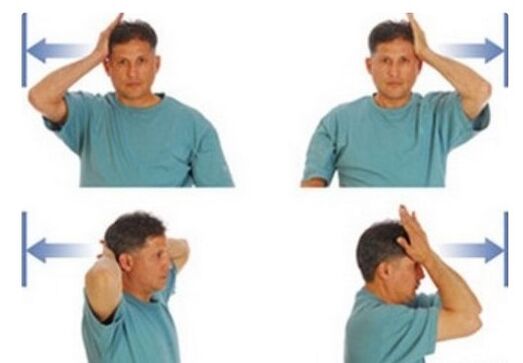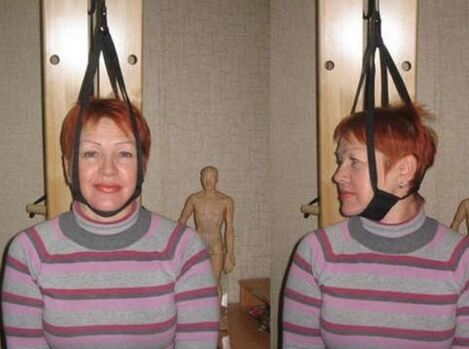The cervical region is an osteochondrosis is a dangerous disease and, if not treated, can become disabled people. Faced with this disease, many people think about how to treat it. Invent the complexities of the disease.
Cervical spine osteochondrosis is a disease that has its own symptom, stage, cause and treatment.
The nature of the disease
Cervical vertebrae osteochondrosis is a progressive disease characterized by degenerative and distrust of discs between the vertebrae.
The cervix class is represented by the seven vertebrae, and this is the most cosmic, but the muscle lining is poorly developed. He is responsible for the side and turns of the head slopes.
Stages of the course of illness
The disease occurs in four stages and the degree is distinguished:
- 1 degree.The stage is characterized by instability, which is manifested in the initial destruction of the discs.
- 2 degrees.At this stage, the discs are manifested. The distance between the vertebrae decreases, the destruction of the fiber ring begins, while the pain occurs due to the nerve grip.
- 3 degrees.The ring is eventually destroyed and a hernia is formed between the vertebrae. The spine is very deformed.
- 4 degrees.He's the hardest. Every movement causes severe pain. With the strong increase in bone tissue, the disease leads to disability.
The picture illustrates the development of osteochondrosis of the cervical spinal canal
Important! At each stage - various symptoms and various treatment methods are used. Doctors take measures regardless of the stage of the disease as this allows the patient to improve the quality of the patient.
The causes of illness
To date, strong growth of sick ages has been observed between 18 and 30 years. Previously, this disease was found only in elderly people and occasionally people under the age of 40. The causes of osteochondrosis of the cervix are different.
It stands out among the most important:
- Overweight;
- Changing your posture;
- Spinal canal scholosis in the neck;
- injuries of the cervical spinal canal;
- errors in the metabolic process;
- constant lifting weights;
- bad physical exercise;
- voltage;
- a sitting image of life;
- the presence of infectious diseases;
- Frequent hypothermia.
If regular back pains appear, this may indicate the spine. One of the diseases can be the instability of the cervical vertebrae. What are the causes of the disease and the main symptoms? What complications can be if you do not start treatment on time?
Cervical vertebrae osteochondrosis is closely linked to muscle cramps that limit the mobility of the vertebrae. As a result, blood circulation, posture, is violated. All of these factors trigger a dynomic process in the discs between the vertebrae. As a result, the nerve was pinched.
Incorrect position can lead to osteocondrosis of the cervical spinal canal while sleeping
A manifestation of illness
Most often, signs of cervical osteochondrosis are the failure of the brain circulation.
Typical:
- dizziness in which loss of consciousness is possible;
- frequent headache;

- Slim in coordination of movements. The disease is most often manifested in district disorders;
- Often ring in the ear and hearing damage;
- the appearance of snoring;
- reducing vision;
- the appearance of hoarseness, the eating of the sound;
- Loss of sensitivity in the fingers.
Important! When multiple symptoms are manifested, seek medical advice. Do not meditate on its own.
Cervical osteochondrosis symptoms
The cervical vertebrae of the cervical region is shown by the following symptoms:
- Koreshka. The patient felt the pain given to the blades or shoulder zone. He feels tingling on his fingers, brushes and forearms. These symptoms are directly related to the nerve stings;
The pain with cervical osteochondrosis of the spinal canal is given pain to the shoulder
- rear compression;
- spine artery;
- Irrititive reflectory. They are expressed in acute and severe pain in the cervical and occlital regions, which appear on the right or left side of the head after sneezing and after a sharp turn;
- Cardinal syndrome. These symptoms are similar to angina pectoris. The pain is paroxysmal and prolonged. The reinforcement occurs when a cough appears, a person sneezes, and a sharp turn of the head.
Important! If inflammation of the cervical region occurs, the symptoms are expressed in a clearer form.
Treatment
Osteocondrosis of the cervix is treated but takes a long time. In addition, you must do it in the hospital and comprehensively.
Doctors use many measures and funds to fight the disease. Including:
- HIVAMAT is a procedure for electrostatic vibro massage of a special device. It is anesthetically, has an anti -inflammatory effect, allows the removal of edema and muscle tension. According to statistics, two seats are sufficient to relieve pain syndrome.
- Laser therapy of MLS. The purpose of the procedure is to relieve pain, remove inflammation, and regenerate soft tissues. The method is innovative, but successfully uses the treatment of osteochondrosis of the cervix and other spinal canal.
- Electrophoresis. This is a procedure in which the drugs under the skin are introduced with electricity pulses. It has a painful, anti -inflammatory effect.
- Applying ozokerite. Treatment with mountain wax and paraffin. After applying the composition, the sore spot is covered with a film. It does not cause discomfort and has a positive effect.
Exercises for osteocondrosis of the cervix. Simplicity and efficiency. Systematic approach is required daily
Important! All procedures are prescribed by a physician, depending on the patient's illness and individual characteristics. These are always selected separately.
In the human body, the cervical spine is an important part and the problems of its work are provoked by negative consequences. In addition, a neglected disease associated with the neck can gradually affect the chest region. The practices of the cervical spinal column promote health and continuation of mobility in this zone of the bone-muscular system.
In addition, the procedures are complemented:
- painkillers, antispamodes and anti -inflammatory drugs;
- the use of gels, creams, ointments to restore tissues;
- Healing physical exercises;
- reflexotherapy;
- Hirudotherapy;
- Massage activities;
- dry section.

Important! Conservative methods are most often used, but unfortunately surgical intervention can be written in difficult situations.
Dry explosion - an effective method for treating the spinal column cervical osteochondrosis
The consequences of osteochondrosis of the cervical spinal canal
The disease can cause serious consequences such as:
- Protabius. This complication is characterized by the protrusion of the pulpo core of the intervertebral disk in which the ring does not die;
- Damage to the intervertebral disc. Occurs when the fibrous ring is destroyed;
- Bone tilts of the vertebrae;
- salt deposit;
- The appearance of sclerotic plaques in blood vessels and other disorders.
Important! The most dangerous consequences of any vascular disorder is because the blood supply to the brain is disturbed, which can lead to serious illness.
The cervical spine requires treatment for osteochondrosis. It takes a lot of time, so you have to be patient and strictly follow your doctor's recommendations and advice.
- Koreshka. The patient felt the pain given to the blades or shoulder zone. He feels tingling on his fingers, brushes and forearms. These symptoms are directly related to the nerve stings;
























